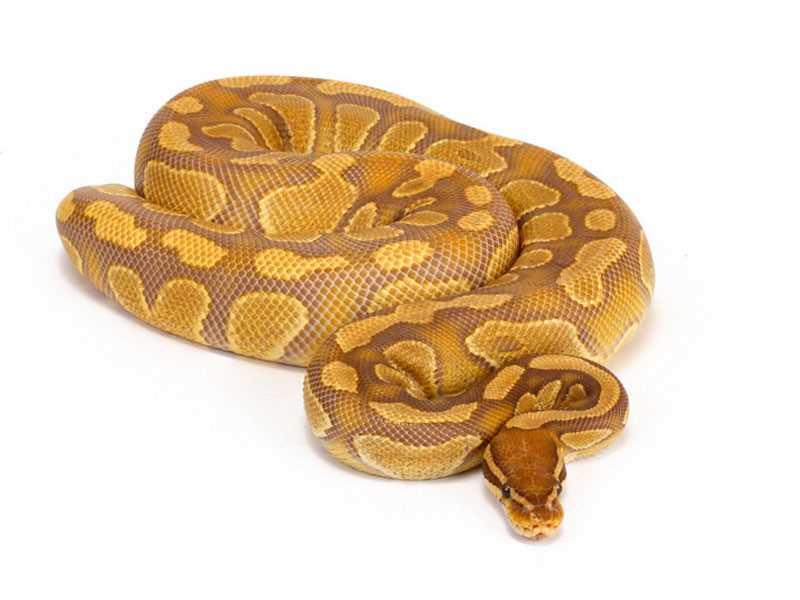
The caramel ball python is a rare and fascinating reptile that has become increasingly popular as a pet in recent years. With its stunning color and unique morph, this snake is a favorite among snake enthusiasts. If you’re considering getting a caramel ball python as a pet, there are a few important things you need to know.
One of the most striking features of the caramel ball python is its color. Unlike the traditional brown and black patterns of other pythons, the caramel ball python has a beautiful caramel color that ranges from light tan to deep brown. This coloration is what makes it so unique and sought after by reptile enthusiasts.
Overall, the caramel ball python is a captivating snake that offers a unique combination of stunning color, ease of care, and a charming personality. Whether you’re a seasoned reptile owner or a beginner looking to start your collection, the caramel ball python is definitely worth considering as your next pet.
Physical Characteristics of Caramel Ball Pythons
The Caramel Ball Python is a unique and rare morph of the ball python species. It is highly sought after by reptile enthusiasts as a pet due to its stunning coloration and striking patterns. This morph displays a beautiful caramel or tan coloration on its scales, which sets it apart from the traditional brown and black patterns seen in other ball python morphs.
In addition to their unique coloration, Caramel Ball Pythons exhibit the classic ball python body shape. They have a thick body and a strong build, allowing them to constrict their prey effectively. Their average size ranges from 3 to 5 feet, with females typically being larger than males.
These pythons have a triangular-shaped head and heat-sensing pits on either side of their face, which enables them to detect warm-blooded prey. They also possess a set of sharp teeth, which they use to grip and hold onto their prey while constricting it.
The scales of the Caramel Ball Python are smooth and glossy, giving their appearance a stunning shine. They have a pattern of dark brown or black blotches, which can vary in shape and size depending on the individual snake. Some individuals may have smaller, more numerous blotches, while others may have larger, more irregular ones.
Overall, the Caramel Ball Python is an exquisite pet reptile with its rare color morph, striking patterns, and unique physical characteristics. Its impressive appearance and manageable size make it a popular choice among snake enthusiasts.
Habitat and Natural Range of Caramel Ball Pythons
In their natural range, caramel ball pythons are found in the forested regions of West Africa, including countries like Ghana, Togo, Benin, and Nigeria. They thrive in a variety of habitats, including humid jungles, savannas, and even farmlands.
Physical Adaptations
Caramel ball pythons have several physical adaptations that aid in their survival in their natural range. Their muscular bodies are designed for constricting their prey, which primarily consists of small mammals like rodents. They have heat-sensing pits located on their lower lip, allowing them to locate warm-blooded prey even in the dark.
The caramel coloration of these pythons serves as a form of camouflage, helping them blend into their natural surroundings. This makes it easier for them to remain hidden from predators and ambush their prey more effectively.
Importance of Conservation
As with all reptiles, habitat destruction and the illegal pet trade pose significant threats to the caramel ball python population in the wild. It is crucial to support responsible breeding practices and discourage the capture and sale of wild-caught caramel ball pythons.
Diet and Feeding Habits of Caramel Ball Pythons
The diet and feeding habits of caramel ball pythons are essential aspects of their care and maintenance. These reptiles are carnivorous and primarily feed on small rodents such as mice and rats. In captivity, it is crucial to provide them with a diet that replicates their natural feeding habits.
Feeding Schedule
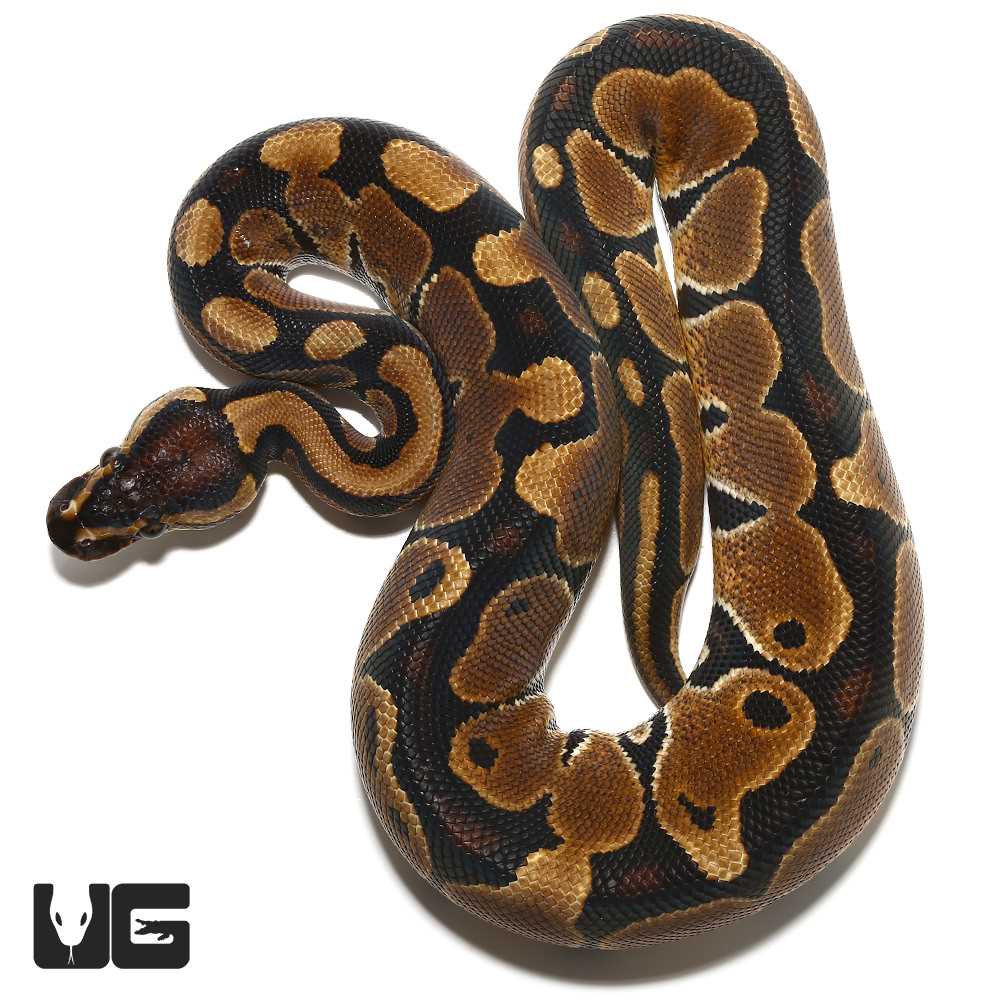
Young caramel ball pythons should be fed every 5-7 days, while adult pythons can be fed every 7-10 days. It is crucial to provide them with a consistent feeding schedule to maintain their health and prevent obesity. Feeding them too frequently can lead to weight gain and health issues.
Feeding Methods
There are two common methods for feeding caramel ball pythons: the live feeding method and the frozen-thawed feeding method. Live feeding involves offering live prey to the snake, while the frozen-thawed method involves thawing and warming frozen prey before offering it to the snake.
While live feeding may seem more natural for a snake, it poses risks to both the snake and the prey. Live prey can potentially harm the snake by scratching or biting it, and injured prey can inflict serious injuries on the snake as well. Therefore, it is generally recommended to feed caramel ball pythons with frozen-thawed prey, which is safer and more convenient.
Supplements
In addition to their main diet of rodents, caramel ball pythons may require supplements to ensure they receive all the necessary nutrients. Calcium and vitamin D3 supplements are commonly provided to help prevent metabolic bone disease. These supplements can be dusted onto the prey before feeding or offered separately in the form of a calcium-rich powder.
Reproduction and Breeding of Caramel Ball Pythons
The caramel ball python is a rare morph of the ball python (Python regius), a popular reptile pet species known for its docile nature and striking colors. This particular morph features a beautiful caramel coloration, making it highly sought after by snake enthusiasts.
Mating occurs when the male, enticed by the scent of the female, slithers over and aligns his body with hers. The male then inserts one of his hemipenes (male reproductive organs) into the female’s cloaca to fertilize the eggs. This process can take several hours and may involve some intense coiling and writhing.
The female will then lay a clutch of eggs, usually ranging from 4 to 12 eggs, in a warm and humid environment. It is vital to provide the female with a suitable nesting box or laying area, as well as a substrate that retains moisture to prevent the eggs from drying out. The eggs will typically take around 55 to 60 days to hatch, with the hatchlings being about 10-14 inches long.
Once the eggs hatch, it is crucial to provide the hatchlings with the proper care and conditions to thrive. This includes maintaining appropriate temperature and humidity levels, feeding them appropriately sized prey items, and providing adequate hiding spots for their security. It is also worth noting that caramel ball pythons, like other ball python morphs, can sometimes have difficulty shedding, so ensuring proper humidity levels is essential.
| Key Points about Reproduction and Breeding of Caramel Ball Pythons: |
|---|
| – Caramel ball pythons are a rare morph with a beautiful caramel coloration. |
| – They reach sexual maturity at around 2-3 years of age. |
| – Breeding season typically occurs in late winter or early spring. |
| – Mating involves the male inserting his hemipenes into the female’s cloaca. |
| – After mating, the female enters a pre-ovulatory shed and lays a clutch of eggs. |
| – The eggs take around 55-60 days to hatch, and the hatchlings require proper care. |
| – Responsible breeding requires research and a commitment to the animals’ well-being. |
Handling and Temperament of Caramel Ball Pythons
Getting Started with Handling
Building Trust
Building trust with your caramel ball python is key to developing a good relationship and ensuring their overall well-being. Start by offering them food using tongs to associate your presence with a positive experience. This will help them associate you with food and create a positive bond.
Signs of Discomfort
Taming Aggressive Behavior
Common Health Issues in Caramel Ball Pythons
Respiratory Infections
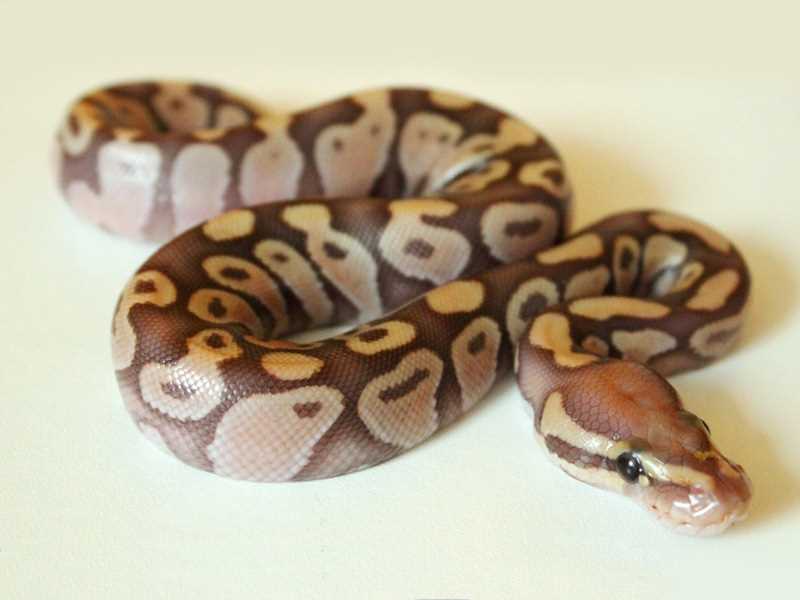
One of the most common health problems found in caramel ball pythons is respiratory infections. These infections can be caused by a variety of factors, including improper humidity levels, poor ventilation, or exposure to drafts. Symptoms of a respiratory infection may include wheezing, open-mouth breathing, nasal discharge, or weight loss.
If you notice any of these symptoms in your snake, it’s important to seek veterinary care immediately. Respiratory infections can be serious and may require antibiotics to treat. Additionally, ensuring that your snake’s enclosure has proper ventilation and maintaining appropriate humidity levels can help prevent respiratory infections from occurring.
Parasites
Parasites are another common health issue that can affect caramel ball pythons. These parasites can include mites, ticks, and intestinal worms. Regularly examining your snake for any signs of parasites, such as small red or black specks on the skin or in the feces, is crucial for their overall health.
If you suspect that your snake has parasites, it’s important to consult with a veterinarian who specializes in reptile care. Treatment for parasites may involve using medicated baths or topical medications to eliminate the infestation. Maintaining good hygiene practices, such as regularly cleaning and disinfecting your snake’s enclosure, can help prevent parasites from becoming a problem.
Mouth Rot
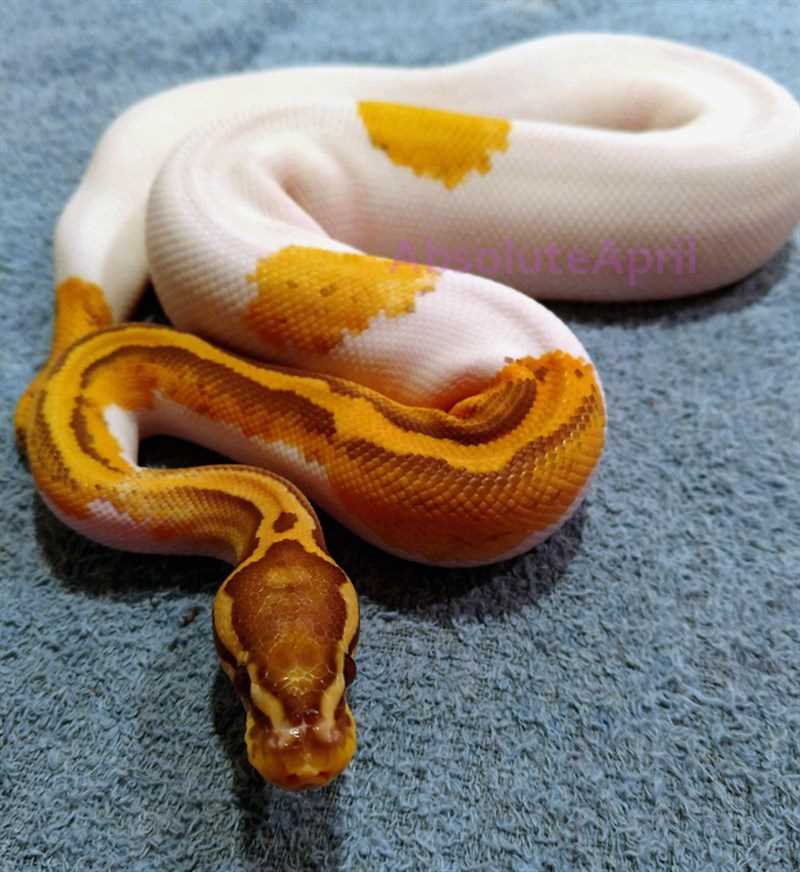
If you notice any signs of mouth rot, such as swelling, redness, or the presence of pus, it’s important to seek veterinary care immediately. Treatment for mouth rot may involve cleaning and disinfecting the mouth, as well as administering antibiotics to treat any infection. Maintaining good dental hygiene for your snake, such as regular teeth cleaning, can help prevent mouth rot from occurring.
Terrarium Setup for Caramel Ball Pythons
One important factor to consider when setting up the terrarium is the temperature. Caramel ball pythons need a properly regulated thermal gradient within their enclosure. The warm side of the tank should be between 88-92°F (31-33°C), while the cool side should be around 78-82°F (25-28°C). This temperature gradient allows the snake to thermoregulate by moving between the different areas of the enclosure.
Humidity levels are also crucial for the health of a caramel ball python. Aim for a humidity range of 50-60%, which can be maintained by providing a water bowl large enough for the snake to soak in. Regular misting of the enclosure can also help maintain humidity levels, especially during shedding periods.
Creating hiding spots is essential to mimic the natural habitat of caramel ball pythons. Provide a few hide boxes, such as cork bark or plastic hides, in different areas of the enclosure. This allows the snake to retreat and feel secure when needed.
Lighting is another factor to consider when setting up the terrarium. While caramel ball pythons do not require UVB lighting like some other reptiles, providing a regular day-night lighting cycle helps regulate their internal clock. Use a low-wattage incandescent bulb or LED light to simulate natural light patterns.
Importance of Temperature and Humidity for Caramel Ball Pythons
Proper temperature and humidity levels are crucial for the health and well-being of caramel ball pythons. As a pet reptile, these rare and beautiful pythons require specific environmental conditions in order to thrive.
Maintaining the proper temperature and humidity levels for caramel ball pythons is essential for their overall well-being. By providing a suitable environment, you can ensure that your pet python remains healthy and happy for years to come.
Recommended Substrates for Caramel Ball Pythons
Choosing the right substrate for your caramel ball python is crucial for its overall health and well-being. Substrate refers to the material that lines the bottom of the snake’s enclosure, providing a comfortable surface for them to rest on.
| Substrate Option | Description |
|---|---|
| Aspen Bedding | Aspen bedding is one of the most popular choices for snake substrates. It is made from shredded aspen wood and provides a soft and natural substrate for your caramel ball python. Aspen bedding is absorbent, easy to spot-clean, and helps maintain humidity levels in the enclosure. However, it doesn’t retain moisture as well as some other substrates. |
| Cypress Mulch | Cypress mulch is another commonly used substrate for snakes. It is made from shredded cypress trees and has excellent moisture retention properties. Cypress mulch is also mold-resistant and has a pleasant scent. However, it can be more difficult to clean compared to other options. |
| Newspaper or Paper Towels | For a simple and easy-to-clean option, you can use newspaper or paper towels as substrate. They are readily available, inexpensive, and make cleaning a breeze. However, they lack the natural appearance and enrichment that other substrates provide. |
| Coconut Fiber/Substrate | |
| Paper-Based Bedding | There are specially formulated paper-based beddings available specifically for reptile enclosures. These beddings are made from recycled paper products and are highly absorbent. They are dust-free, easy to clean, and provide a comfortable surface for your caramel ball python to move on. However, they may not retain moisture as effectively as other substrates. |
Remember to regularly clean and replace the substrate when necessary to maintain a hygienic and healthy environment for your caramel ball python. This will help prevent the buildup of bacteria or mold that could negatively affect your snake’s health.
Lighting and UVB Requirements for Caramel Ball Pythons
Lighting is an essential aspect of caring for caramel ball pythons. While these snakes do not necessarily require UVB lighting, it can offer a range of benefits for their overall health and well-being.
The primary purpose of UVB lighting is to provide a source of ultraviolet (UV) radiation, specifically UVB rays. In the wild, reptiles like the caramel ball python would receive UVB exposure from the sun. UVB rays play a crucial role in the synthesis of Vitamin D3, which is essential for the proper absorption and metabolism of calcium in reptiles.
The choice of UVB lighting for caramel ball pythons should be carefully considered. It is recommended to use a UVB light with a wavelength of around 290-320 nanometers. This range closely resembles the UVB spectrum found in sunlight and is suitable for reptiles. Additionally, it is crucial to choose a UVB light that provides the appropriate intensity for the size of the terrarium. This ensures that the snake receives adequate UVB exposure without being overwhelmed by excessive light.
While UVB lighting is not an absolute requirement for caramel ball pythons, it can contribute to their overall health and well-being. By providing them with access to UVB rays, you are helping to mimic their natural environment and ensuring that they can effectively process and utilize calcium. Consulting with a veterinarian or reptile specialist can help to determine the best UVB lighting options for your caramel ball python.
Lighting and UVB Requirements for Caramel Ball Pythons
Lighting and UVB requirements are important considerations for the well-being of caramel ball pythons. As a unique morph of the ball python, the caramel coloration adds to the beauty and appeal of this pet snake. However, it’s essential to provide adequate lighting and UVB rays to ensure their health and longevity in captivity.
Why Lighting and UVB Rays are Important
Just like other reptiles, caramel ball pythons require exposure to UVB rays to help them produce vitamin D3, which is crucial for calcium metabolism and overall bone health. Without proper UVB lighting, these snakes can develop metabolic bone disease, which can lead to weak bones, deformities, and even death.
Recommended UVB Lighting Schedule
Monitoring UVB Levels
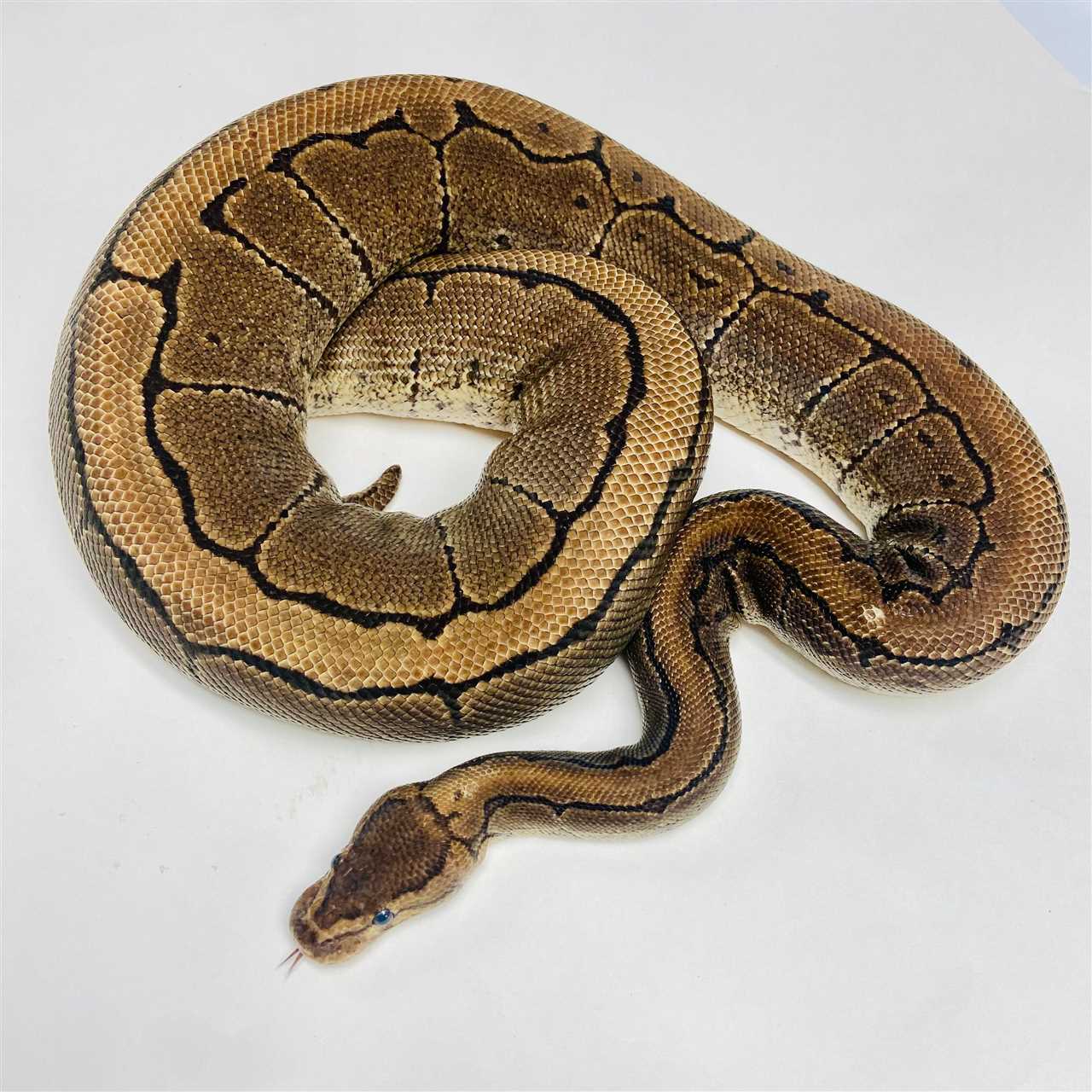

I’m Lena Adams—a product of an unconventional upbringing in the African wilderness. My father, a daring explorer of African wildlife, sparked my fascination with reptiles, a passion that intertwined with the tragic loss of my mother during an expedition, leaving an indelible mark on my life. Driven to understand the creatures that captivated my parents, I embarked on my journey, sharing insights about reptiles, frogs, and lizards on my website. Through my explorations and conservation efforts, I honour my family’s legacy while seeking connections—to the creatures, nature, and the mother whose presence I yearn to understand.
